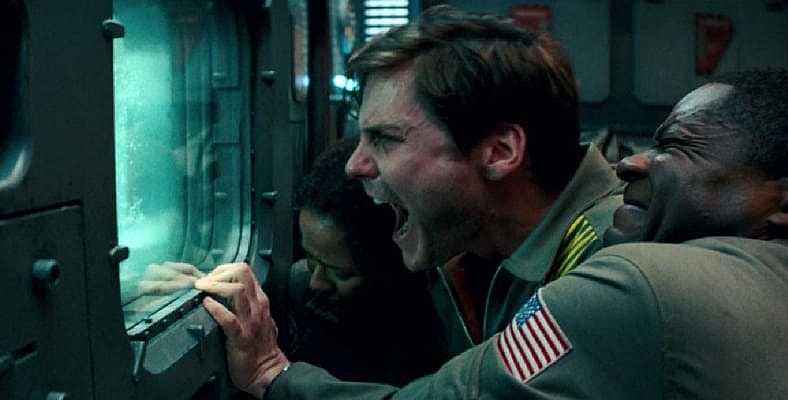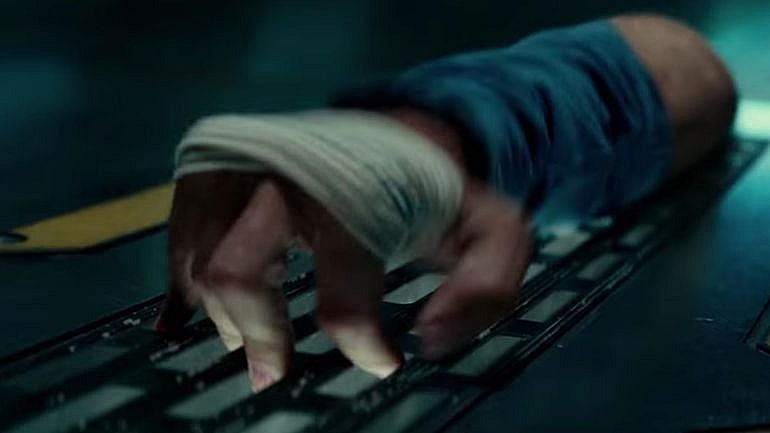Movie Review: The Cloverfield Paradox

Out of Nowhere
Cloverfield was an experimental film. An American Kaiju-film filmed entirely through a handheld lens. Since then, fans have been wondering when a proper sequel might emerge. When 10 Cloverfield Lane arrived in theaters, fans expected the many questions posed by the first to be addressed by the second. That didn’t happen. Instead, audiences were given a claustrophobic thriller with amazing performances from the entire cast. The first anthology film to continue the Cloverfield name.
For a long time, the next film in the Science Fiction series was set for a release in early 2018. The film was entitled God Particle, a space-set adventure starring David Oyelowo, Daniel Bruhl, and Zhang Ziyi. Rumors surrounded an idea that a crew is searching for an infinite energy source. The crew’s research causes them to lose something important: the Earth.
It’s a great premise. As the original release date came and went many Bad Robot fans were left with more than a few questions: where is the marketing, where are the announcements, and where is the film?
Now, in a surprise move Bad Robot Productions and Netflix have released The Cloverfield Paradox. With many fans with plenty of unanswered questions, expectations are rather high. The end result is a well-made film of interesting intentions. Featuring some great effects, good performances, and a few good ideas The Cloverfield Paradox strives to joins the stars, but ends up falling shorts of the clouds. Sometimes soaring to Interstellar heights without living up to the Cloverfield name.
A Few Good People

Gugu Mbatha-Raw is the true star of the film. She plays a scientist who leaves her husband to join a space mission. Her mission is to test and search for an infinite energy source in order to save the Universe. Sound familiar? It should. The Cloverfield Paradox shares countless similarities with many films that came before it. Everything from Alien to 2001 and Interstellar to Sunshine is present at the core of the film.
Such is one of the issues with the amalgam of Science Fiction that The Cloverfield Paradox becomes. The film has hints of an incredibly interesting premise: a haunted house story in space. But that’s never truly addressed. The team behind the film created a long list of gags and set-pieces utilizing horror elements in space, but nothing ever comes of it. Despite the fact that there’s a sentience at work it’s never addressed. Instead, the characters seem intent on following the plot of the film instead of realizing exactly what’s happening.
Chris O’Dowd is, by far, the best part of the film. His dry and declarative humor serving as the only self-realization in the film. The only time anyone ever addresses just how “weird” the happenings of the movie are is when O’Dowd simply states what’s happening outright. Otherwise, the Paradox of the film becomes the continuously progressing story that is never addressed. Much like many Bad Robot productions before it, The Cloverfield Paradox is more interesting in establishing mystery then it is in solving it.
Let’s Get to the Weird
When the time comes to get to the weird, The Cloverfield Paradox becomes a captivating film. The escalation of exciting events becomes memorable, giving each exiting crew member their own unique “way to go.” It’s fitting for such an odd story that also tries to touch on the “meaning of god.” Unfortunately, like the story itself the many weird events of the film don’t really build to anything. Like many probably expected, the end of the film could be construed as more of a beginning.
But the story does coincide with the original Cloverfield film. Something the first sequel never did.
In 10 Cloverfield Lane the relation to the first film was simply circumstantial. The stories never connected; the science fiction elements weren’t even the same. Such is not the case with The Cloverfield Paradox. It does address and feature elements from the first film. But it doesn’t answer any of the Cloverfield-related questions. It merely includes them. But it doesn’t stop the film from torturing the inhabitants of the space station for the entertainment of the audience. In that venture, the film written by Oren Uziel and Doug Jung more than succeeds.
Whether or not these forced connections are a detriment or blessing to this film will never be known. But what makes Paradox unique is the best aspect of the film: spooky in space.
The Verdict
Several shots in The Cloverfield Paradox glide across the film’s small spaceship in a Star Trek fashion. With good reason. This is the studio that brought the new Star Trek to life and the film’s cinematographer Dan Mindel worked on both Star Trek and Star Wars: The Force Awakens. Plenty of reasons for this film to look incredible. However, the actual shots aren’t interesting despite spectacular set pieces and special effects.
Despite so many wonderful elements, actors and effects The Cloverfield Paradox does not live up to its own expectations. Like any J.J. Abrams work the film is always interested in asking questions. As if it wants audience members to ponder everything from morality to god. But stories need to have endings; they need to develop. Characters need to progress and learn and audiences with them. That won’t happen with The Cloverfield Paradox.
Unlike the original film, there’s no slow reveal to a destroyed city and an amazing monster. Unlike 10 Cloverfield Lane there’s no character development driven by terror and emotional depth. It’s not that The Cloverfield Paradox doesn’t try to mimic those feelings, it’s that it doesn’t succeed.
But that’s not the point of these films. Like Black Mirror or The Twilight Zone, Cloverfield seems to be an interesting set of adventures connected loosely by a Science Fiction universe without many rules. Like a few other franchises, Cloverfield seems interested in subverted fan’s expectations.
Unfortunately, fans weren’t expecting something else. They were expecting something…more.

